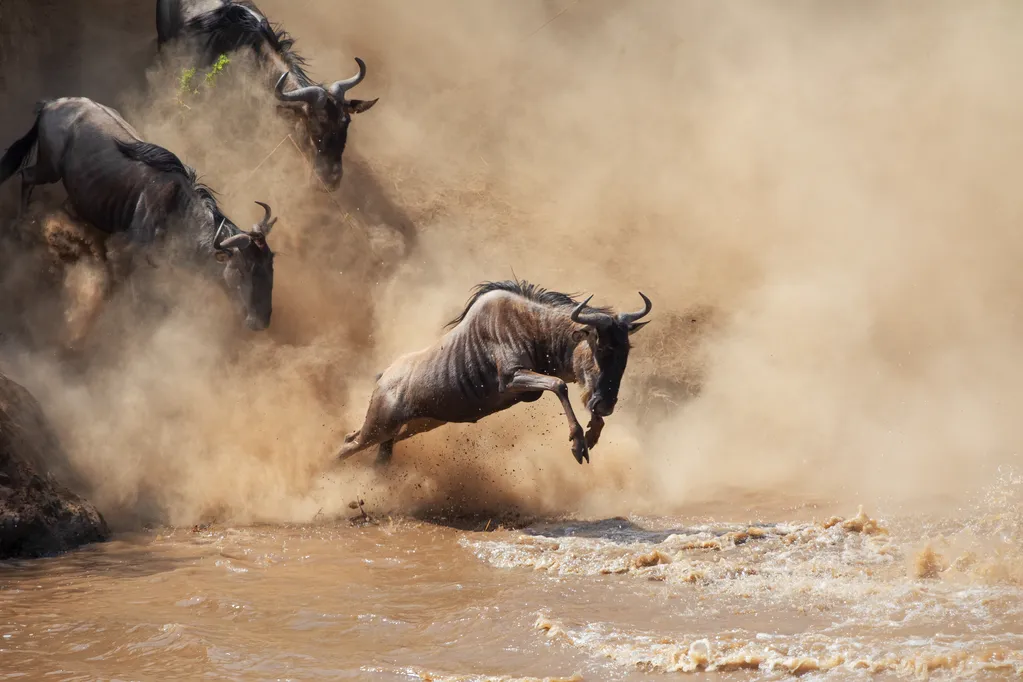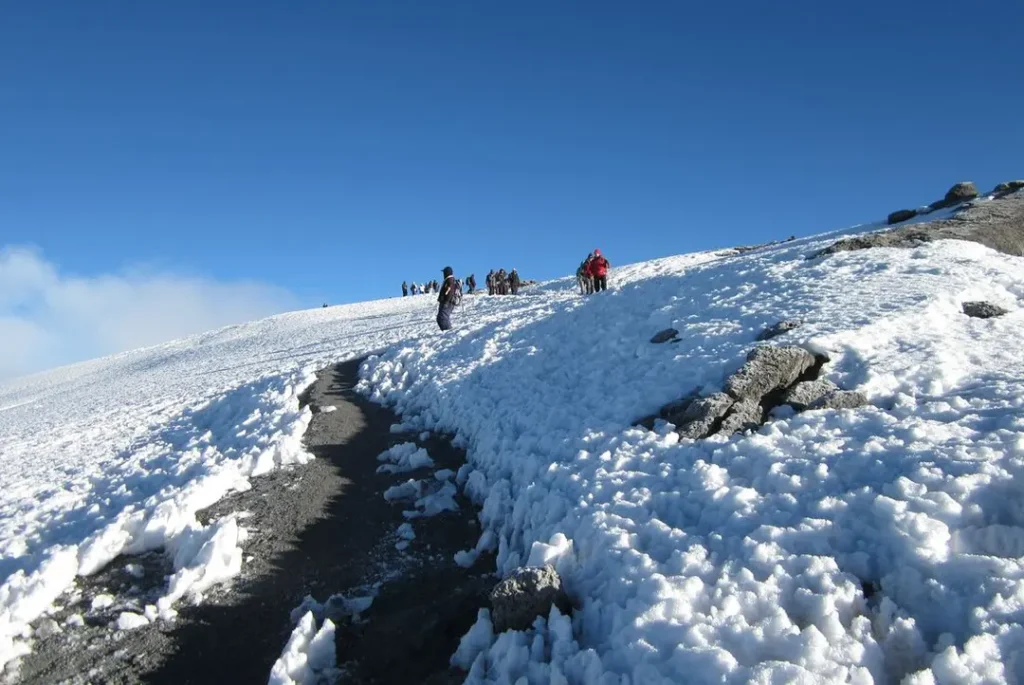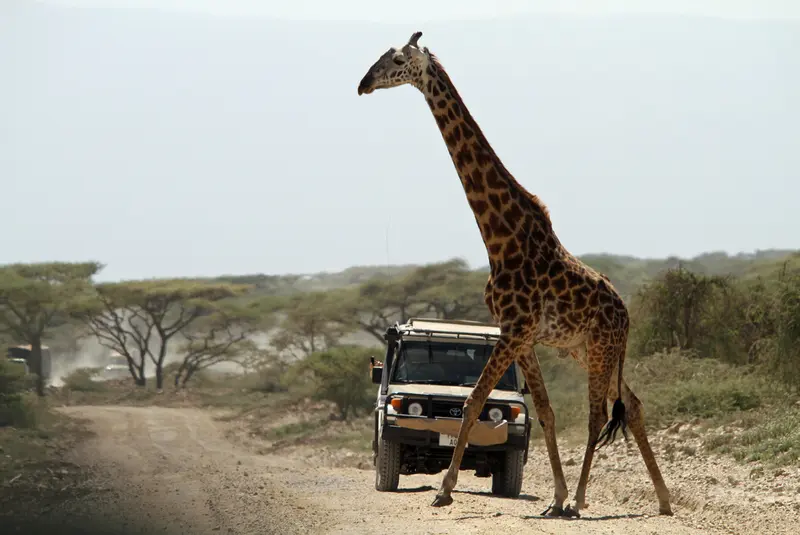Table of Contents
ToggleHome to ‘the African Big 5 animals’, a big mountain, and a whole host of big experiences, Tanzania is a must for every African safari adventurer.
The country is home to 22 stunning National Parks. This blog will cover 10 of Tanzania’s most magnificent national parks. National Parks in Tanzania are spread across four main “safari circuits”. These circuits are designed to reduce travel time and enhance the safari experience.
Tanzania is a large and varied country, so each safari circuit offers its unique charm, different landscapes, and exciting wildlife encounters.
The circuits cover the country’s northern, southern, western, and eastern parts, including parks, reserves, conservation areas, and even islands and beaches along the Indian Ocean in the eastern circuit. You can choose which circuit to explore based on your preferences and interests.
Curious about the entrance fees? Visit our page for Tanzania National Parks fees, Permits, and Practical information. Need to plan your trip? Consult our Safari Planner, for a clear overview of the driving times and distances between the most visited parks and towns in Tanzania.

A List of National Parks In Tanzania
- Serengeti National Park
- Ngorongoro Crater
- Tarangire National Park
- Lake Manyara National Park
- Mount Kilimanjaro National Park
- Arusha National Park
- Nyerere National Park
- Ruaha National Park
- Gombe Stream National Park
- Mahale Mountains National Park
- Katavi National Park
- Mikumi National Park
- Mkomazi National Park
- Rubondo Island National Park
- Kitulo National Park
- Udzungwa Mountains National Park
- Kigosi National Park
10 of most magnificent national parks in Tanzania

1. Serengeti National Park
Serengeti is the best of all national parks in Tanzania and Africa.
This classic safari destination is where the majesty of the scenery and expansive atmosphere is matched by extraordinary game viewing.
Here, endless savannah plains, rocky outcrops, wetlands, and woodlands support countless wild animals. Naturally, the Serengeti ecosystem is most famous for its role in the Great Wildebeest Migration – the largest overland mammal migration on earth.
In fact, most of the year, the wildebeest herds move through Serengeti before passing the border into Maasai Mara National Reserve. No words can fully capture the feeling of sitting in amongst thousands of wild animals that stretch as far as the eye can see.
However remarkable though it may be, the Serengeti offers much more than the Great Migration. All African Big 5 all present, and encounters with big cats and hyenas are all but guaranteed, viewed against the backdrop of breathtaking landscape.
The Serengeti ecosystem also includes many surrounding reserves and game control areas and is open to the Ngorongoro Conservation Area described below.

2. Ngorongoro Conservation Area
Ngorongoro Conservation Area’s most prominent feature is the Ngorongoro Crater.
Often described as Africa’s Eden, this ancient 260km2 volcanic caldera which is 262 square kilometers wide encloses one of the most bio-diverse and precious wild spaces in Africa, giving the impression that time stood still at the center of the massive geological cradle.
Here, many of the most iconic animals of Africa including the Big 5 (lions, leopards, elephants, buffalos and Rhinos) thrive. Outside the crater, the Ndutu area of Ngorongoro Conservation Area serves as a critical resting point in the Great Wildebeest Migration.
Here, more than a million wildebeest arrive on the short grass plains to calve. At the height of the chaos, over 8,000 calves are born every day, forced to find their feet quickly or be lost to the predators that throw themselves into the wildebeest melee with joyous abandon.
The Olduvai Gorge’s steep-sided ravine is another of Ngorongoro’s vital attractions, having yielded a timeline of our evolution as a species. The scattered tools, fossils, and bone fragments reveal the gradual development of societies and social complexities that today define Homo sapiens.
3. Lake Manyara National Park
Lake Manyara National Park is situated between Lake Manyara and the dramatic wall of the Great Rift escarpment.
Known for its spectacular displays of pink flamingos and other fantastic water birds, Lake Manyara is a small and less visited park than the Serengeti or Ngorongoro. This makes it perfect as a perfect launchpad for exploring the Tanzania Safari Circuit.

4. Tarangire National Park
Close to Manyara is Tarangire National Park is the southernmost park in the Tanzania northern circuit. Tarangire is a land of giant baobabs, shimmering swamps, and sweeping vistas.
It is also one of Africa’s most underrated safari destinations, boasting abundant wildlife. It is also a vital landscape for one of the lesser-known mammal migrations in Tanzania as during the dry season, the Tarangire River becomes one of the only available water sources.
Thousands of animals are drawn to its banks from miles in every direction.
5. Mount Kilimanjaro National Park
Mount Kilimanjaro – Africa’s tallest mountain – needs little by way of introduction. Every year, thousands of amateur and experienced hikers set out to summit its peak (5,895m). This snow-capped summit stands out strangely against the flat Rift Valley scenery below. And even those reluctant to hike it should be content to gaze upon this African legendary mountain from its base.

6. Nyerere National Park
Carved from the former Selous Game Reserve, Nyerere National Park now extends over three sides of the Rufiji River valley. River Rufiji dominates the national park’s landscape, fanning into a complex network of channels, oxbow lakes, and swamps, supplying a never-ending parade of thirsty animals drawn to the water’s edge.
While the national park was established to boost its tourism potential, there is no question that Nyerere National Park remains something of a forgotten corner of Africa, where wildlife enthusiasts can lose themselves in the vast wilderness.
7. Ruaha National Park
Ruaha National Park is a gem of the southern Tanzania safari circuit, a vast and untouched semi-arid wilderness area, divided by life-giving river systems and dotted with mystical Upside-Down Trees. The rugged park hosts high densities of herbivores, sizeable herds of elephants, and one of Africa’s largest lion populations.
Cheetahs, leopards, Spotted hyenas, and painted wolves sightings are frequent, and if you are lucky, you can even have even spot one of the park’s elusive striped hyenas.

8. Gombe Stream National Park
Located on the shores of Lake Tanganyika (Africa’s deepest and the world’s second deepest lake) is Gombe Stream National Park, made famous by Jane Goodall’s behavioral research of the resident chimpanzees. Conducted over 40 years, her studies are thought to be the longest ever done on any one wild animal population.
Within the small (22 square kilometers) confines of Gombe Stream National Park’s grasslands, woodlands, and thick rainforest jungle, you can spot red colobus monkeys, blue monkeys, olive baboons, and red-tailed monkeys in addition to chimpanzees.
9. Katavi National Park
Katavi National Park ranks among the most electrifying African safari destinations in Tanzania, ruled by the cadence of the rainy season.
During the late dry season, this Tanzania national park swelters beneath a merciless sun and its wildlife residents are forced to compete for access to the remaining water in a dramatic battle for survival. Visitors who travel here off the beaten safari track are rewarded with a natural African paradise that they can enjoy all to themselves.

10. Arusha National Park
Arusha city acts as the gateway to the Tanzania northern safari circuit, meaning that Arusha National Park is usually the first or the last stop for travelers navigating the route.
Inside the park, Mount Meru, a dormant volcano is occasionally referred to as the “little brother” of Mount Kilimanjaro. The park offers a much quieter and more intimate experience, along with spectacular wildlife encounters en route to the summit.
You might also like:

